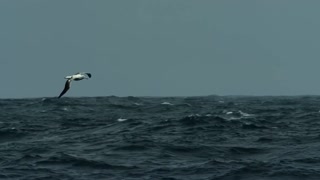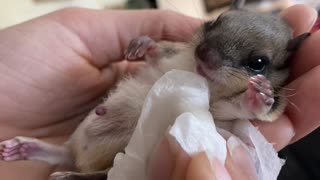Adorable Lost Baby Gannet Bird Flying Near Canal
Gannet, any of three oceanic bird species within the family Sulidae (order Pelecaniformes or Suliformes).
Closely related to the boobies and variously classified with them in the genus Sula or separated as Morus (or Moris), the gannets are the best known of the Sulidae. They are found in the northern Atlantic, where they are the largest seabirds, and also in temperate waters around Africa, Australia, and New Zealand. Adult gannets are mainly white with black-tipped wing feathers.
They have a large, yellowish or buff-coloured head marked with black around the eyes. They have a tapered beak and a pointed tail. Gannets dive with half-closed wings into the sea in order to catch fish and squid. They waddle on land but are expert fliers, alternating rapid wing beats with gliding.
They spend most of their lives over water. Gannets nest in dense colonies on cliffs, brooding a single bluish, chalky egg for six or seven weeks in a nest of seaweed or mud. The young birds are fed by regurgitation and reach maturity in the third or fourth year.
The largest of the three species is the 100-cm (40-inch) northern gannet, Morus bassanus (or Sula bassana), sometimes called solan goose; it breeds on islands in Canada, Greenland, Iceland, and northeastern Europe, wintering to the Gulf of Mexico, Morocco, and the Mediterranean. The two slightly smaller southern species are the Cape gannet (M. capensis), which breeds on islands off South Africa, and the Australian (or Australasian) gannet (M. serrator), which breeds around Tasmania and New Zealand.
Though gannets (and the related boobies) are traditionally grouped in the order Pelecaniformes, some taxonomists have suggested that on the basis of genetic data, they should be grouped with cormorants (family Phalacrocoracidae), darters (family Anhingidae), and frigate birds (family Fregatidae) in the order Suliformes.
Gannets are colonial breeders on islands and coasts, normally laying one chalky, blue egg. Gannets lack brood patches and they use their webbed feet to warm the eggs.[3] It takes five years for gannets to reach maturity. First-year birds are completely black, and subsequent sub-adult plumages show increasing amounts of white.
The most important nesting ground for northern gannets is the United Kingdom with about two thirds of the world's population. These live mainly in Scotland, including the Shetland Isles. The rest of the world's population is divided between Canada, Ireland, Faroe Islands and Iceland, with small numbers in France (they are often seen in the Bay of Biscay), the Channel Islands.
Norway and a single colony in Germany on Heligoland. The biggest northern gannet colony is on Scotland's Bass Rock; in 2014, this colony contained some 75,000 pairs.
Sulasgeir off the coast of the Isle of Lewis, St. Kilda, Grassholm in Pembrokeshire, Bempton Cliffs in the East Riding of Yorkshire, Sceilig Bheag, Ireland and Bonaventure Island, Quebec are also important northern gannet breeding sites.
-
 0:14
0:14
Love to Nature
2 years agoA single Northern Gannet bird flying above the sea
1072 -
 0:08
0:08
pinkponk
2 years ago $15.64 earnedAdorable Baby doll.
3.37K8 -
 0:21
0:21
Hawalther
2 years agoBaby flying squirrel
821 -
 11:32
11:32
JoBlo Horror Originals
22 hours agoWhat REALLY Happened To The Entity?
3.49K3 -
 7:10:20
7:10:20
SNEAKO
11 hours agoYOU DONT WANNA MISS THIS… (surprise guest)
93.3K40 -

Alex Zedra
11 hours agoLIVE! Girls Scary Game Night
65.7K29 -

Fresh and Fit
14 hours agoThe End Of An Era. We Are Leaving YouTube.
154K175 -
 34:46
34:46
Man in America
17 hours agoSHOCKING Proof: Grocery Prices Tripled in Just Two Years!!! w/ Dr. Kirk Elliott
59.2K42 -
 6:52
6:52
Chrissy Clark
1 day agoTikToker Melts Down Over Supreme Court Ruling
64.8K43 -
 1:29:44
1:29:44
Kim Iversen
13 hours agoSCOTUS Backs Corporate Censorship Powers. RFK Jr Hit Piece Hits New Low
80.5K92